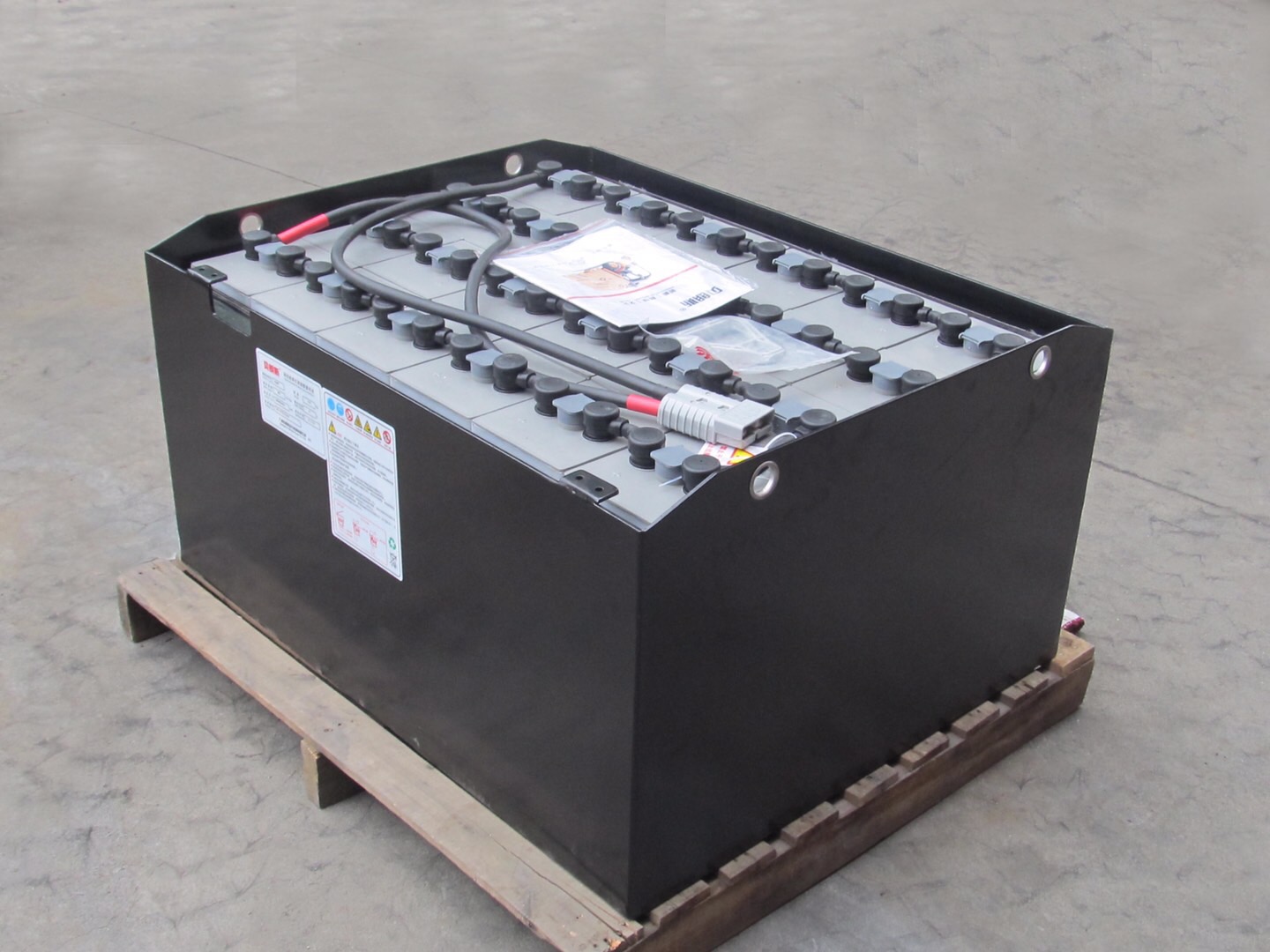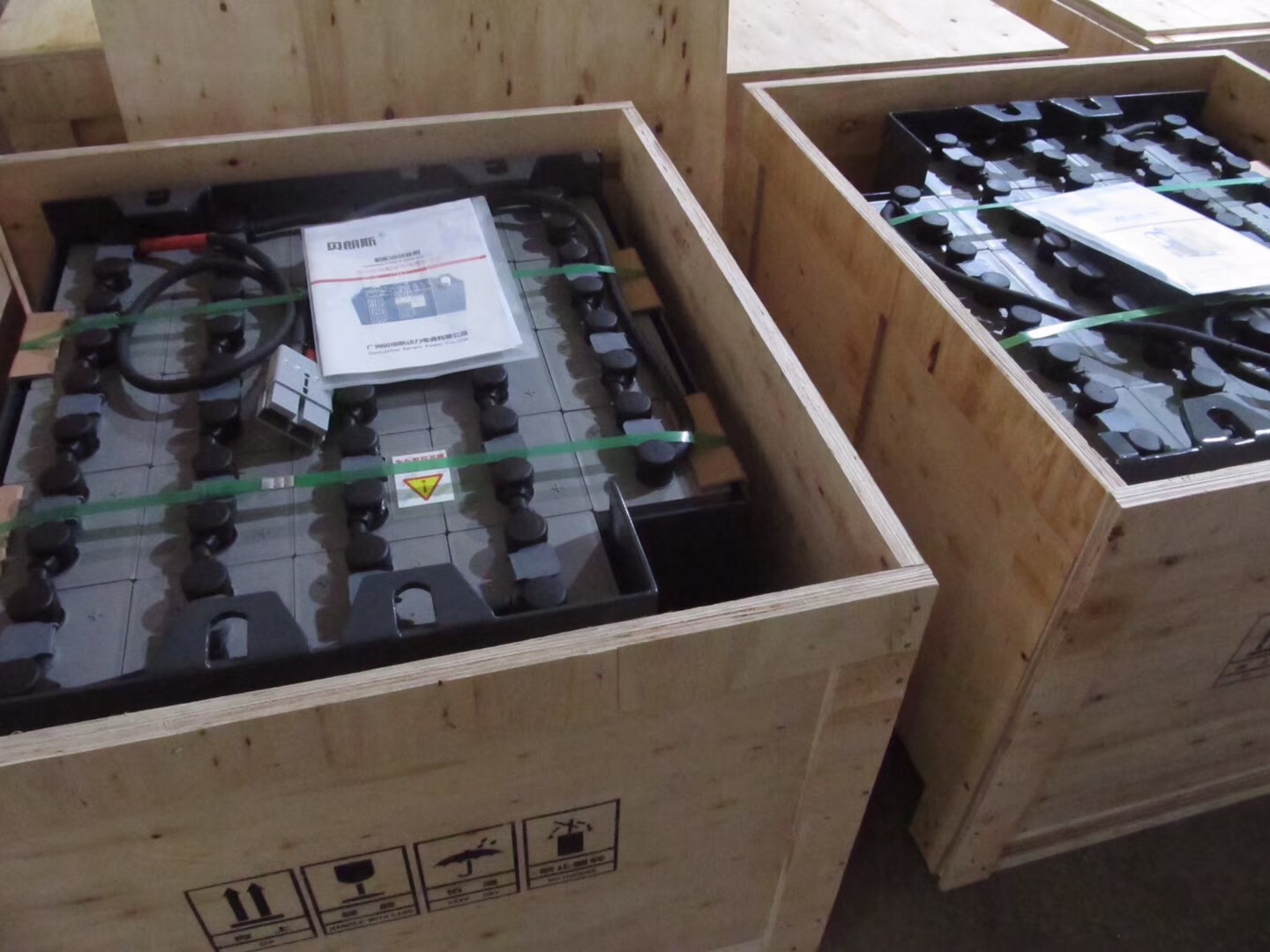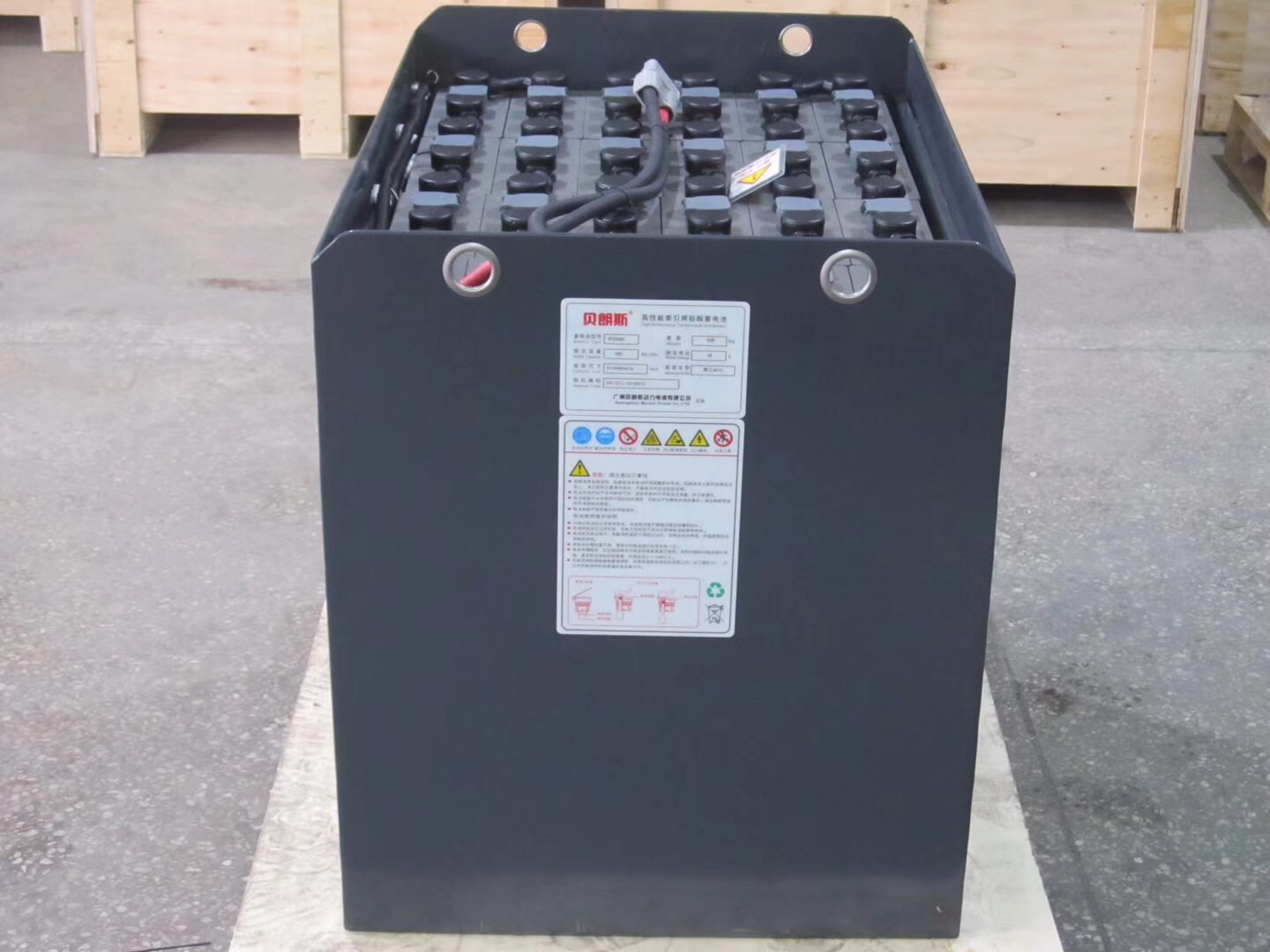
电动叉车用管式铅酸蓄电池连接方式有两种,分别为软连接和硬连接,软连接结构设计较为复杂,生产成本相对较高,所以很多厂家选择使用硬连接,故需要使用到连接条。连接条用于电动叉车用管式铅酸蓄电池成组焊接时单体电池之间的连接,即单体电池串联时的导电件和连接桥梁,是不可缺少的组成部分,但是都属于开口式的加水电瓶,加水这个是叉车蓄电池的必要工作。

在购买电动叉车的时候,电动叉车厂家都会提醒一定的时间里电动叉车的蓄电池要加水,但是不能往电动堆高叉车的蓄电池里加自来水或者纯净水,必须要用蒸馏水,这是为什么呢?
在电动叉车充放电过程中,由于电动叉车的蓄电池电解和蒸发,导致电解液中的水会而逐渐减少,从而使得电解液面下降。要是没有及时补充的话,有可能缩短电动叉车蓄电池的使用寿命。电动叉车的蓄电池里补充的水应该是蒸馏水,切忌用饮用纯净水代替。因为纯净水中含有多种微量元素,对电动叉车蓄电池会造成不良影响。

最近几年,我国开始鼓励生产环保节能的低碳型机械设备,电动叉车应该说迎来了春天,电动堆高叉车未来发展空间特别大。
电动叉车使用的普通蓄电池应每月补水一次,其他各型蓄电池要视耗水情况,定期给予补充蒸馏水。对暂时不使用的电动叉车蓄电池,可延缓数月在进行补水。
给电动叉车的蓄电池补水后,应该适量的补充电。如果有的电动叉车蓄电池出现液面下降较快,补水频繁,要检查电动堆高叉车的调节器限额电压调的是否过高。过高会出现过充电,水分消耗大,蒸发快,这种情况可通过调整电动叉车的限额电压解决。如有个别电池下降快,要检查是否产生短路的现象。此外,还要看电动叉车的电池槽有无裂痕,电解液是否渗漏,要按实情判断后再行处理。

以下小编简单分析下叉车蓄电池蒸馏水或者去离子水的结构及制造方法:
一、 物理特性(Physical specification of purified water)
1、 Measurable water conditions: The water to top up the lead acid batteries must be clear, clean color free, on sellable and free of oil particles(See DIN 38 404 part 1 and part2)
外观:必须清澈透明,无色,无味,无油等杂质(参见DIN 38 404第1部分和第2部分)
2、 PH value: the pH value can be tested accordingly DIN 19360,the permissible value must be between pH=5 and 7;
PH值:PH值符合DIN 19260标准其允许范围在:5~7之间;
3、 Electrical conductivity: the electrical conductivity of the water ,when it comes out of the purifying installation must be less than 10μ s/cm.The electrical conductivity of the water to be used for topping up the lead acid batteries must be less than 30μ s/cm(See DIN 38 404 part 8).
导电系数:蒸馏水刚制成时,导电系数应低于10μ s/cm,加到铅酸蓄电池中时,蒸馏水的导电系数应低30μ s/cm(可参见DIN 38404标准第 8部分)
二、 化学无素含量(Chemical specification of purified water)
The maximum permissible impurities of the water to top up the lead acid batteries are given in the table
加到铅酸蓄电池中的蒸馏水的杂质最大允许范围请参见下表。
|
序号 NR |
允许最大杂质范围 |
允许最大含量毫克/升(mg/l)mg per liter Maximum |
|
1 |
Impurity from the container material like SiO2 容器带来的类似二氧化硅等杂质 |
10 |
|
2 |
Oxide-able organic residue(KMnO4)Calcium permanganate 氧化性的有机物残留(KMnO4)高锰酸钾等 |
20 |
|
3 |
Metals of the sulphuric-water group like Pb Co As Sn Bi Cu Cd 硫酸溶液中金属元素含量(如:铅、钴、砷、锡、铋、铜、镉等 单个 per element 共同出现 In total |
1 2 |
|
4 |
Metals of the Ammonia Oxide group like:Fe,Co,Mn,Cr 含金属杂质的硝酸盐和亚硝酸盐如:铁、钴、锰、铬 单个 per element 共同出现 In total |
1 2 |
|
5 |
Halogen, calculated as Chloride 卤素,以氯化物计 |
1 |
|
6 |
Nitrogen derivatives as Nitrate 氮的衍生物以硝酸盐计 |
10 |
|
7 |
Nitrogen derivatives in the form of Ammonia 以铵离子形式存在的氮的衍生物 |
50 |
三、 蒸馏水的储存(Storage of purified water)
The purified water need to be stored in the clean appropriate containers, made of glass, hard rubber, polypropylene, PVC, The tubes must be made of Polyethylene, PVC or rubber.
蒸馏水必须储存在清洁的适当的容器内,容器的材料可以玻璃、硬橡胶、聚乙烯、聚丙烯、聚氯乙烯。管子的材料必须是聚乙烯、聚氯乙烯或硬橡胶。
Metal containers are not allowed, as there is risk to Metallic lons that may come out the material. In case glass containers are used, then there is the risk of the evolving the Sillcium acid (SiO2) Kieselsaure out of the glass material, It is not harmful and it will reat in the residue of the water.
不允许使用金属容器。因使用金属容器可能会有金属离子从材料中游离出来。如使用玻璃容器时,可能也有硅酸盐离子从玻璃材料中游离出来,但这种离子无害且会吸附到水中的杂质上。
Water must be kept in a closed containers, as it will absorb Carbon-dioxide (CO2)out of the air, Which increase the electrical conductivity of the water.
因为蒸馏水会吸收空气中的二氧化碳从而使它的导电系数增加因而储存在密闭的容器内。